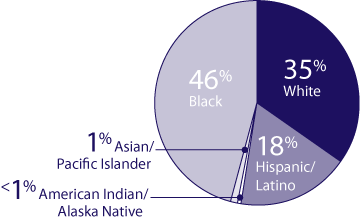|
New York Times
August 24, 2009
Officials Weigh Circumcision to Fight H.I.V. Risk
By RONI CARYN RABIN
Public health officials are considering promoting routine circumcision for all baby boys born in the United States to reduce the spread of H.I.V., the virus that causes AIDS.
The topic is a delicate one that has already generated controversy, even though a formal draft of the proposed recommendations, due out from the Centers for Disease Control and Prevention by the end of the year, has yet to be released.
Experts are also considering whether the surgery should be offered to
adult heterosexual men whose sexual practices put them at high risk of
infection. But they acknowledge that a circumcision drive in the United
States would be unlikely to have a drastic impact: the procedure does not
seem to protect those at greatest risk here, men who have sex with men.
["Also"? If they were serious about preventing HIV, wouldn't adult men at high risk be their first priority?]
Recently, studies showed that in African countries hit hard by AIDS, men
who were circumcised reduced their infection risk by half. But the
clinical trials in Africa focused on heterosexual men who are at risk of
getting H.I.V. from infected female partners.
[They always say "reduce by half" or "reduce by 60%" - the relative risk reduction - because it sounds more than "reduce 1.8%" - the absolute risk reduction, and they never mention that it would take more than 40 circumcisions to prevent one HIV infection in Africa, hundreds or thousands in the US.]
For now, the focus of public health officials in this country appears to
be on making recommendations for newborns, a prevention strategy that
would only pay off many years from now. Critics say it subjects baby boys
to medically unnecessary surgery without their consent.
But Dr. Peter Kilmarx, chief of epidemiology for the division of
H.I.V./AIDS prevention at the C.D.C., said that any step that could
thwart the spread of H.I.V. must be given serious consideration.
"We have a significant H.I.V. epidemic in this country, and we really need
to look carefully at any potential intervention that could be another tool
in the toolbox we use to address the epidemic," Dr. Kilmarx said. "What
we've heard from our consultants is that there would be a benefit for
infants from infant circumcision, and that the benefits outweigh the
risks."
[That is simply nonsense. The only possible benefit to infants is a one chance in 190 of it preventing a usually readily treatable urinary tract infection.]
He and other experts acknowledged that although the clinical trials of
circumcision in Africa had dramatic results, the effects of circumcision
in the United States were likely to be more muted because the disease is
less prevalent here, because it spreads through different routes and
because the health systems are so disparate as to be incomparable.
[The "dramatic results" amount, in total, to 73 circumcised men who might have been infected if their groups totalling 5,411 men had not been circumcised.]
Clinical trials in Kenya, South Africa and Uganda found that
heterosexual men who were circumcised were up to 60 percent less likely to
become infected with H.I.V. over the course of the trials than those who
were not circumcised.
["Up to 60%" is like "Up to 50% off" at sales - it's called "bait advertising" or "bait and switch".]
There is little to no evidence that circumcision protects men who have sex
with men from infection. Another reason circumcision would have less of an
impact in the United States is that some 79 percent of adult American men
are already circumcised, public health officials say.
[Put another way, circumcision has had no impact.]
But newborn circumcision rates have dropped off in recent decades, to
about 65 percent of all newborns in 1999 from a high of about 80 percent
after World War II, according to C.D.C. figures. And blacks and Hispanics,
who have been affected disproportionately by AIDS, are less likely than
whites to circumcise their baby boys, according to the agency.
[They get that result by pooling blacks and Hispanics: Blacks are circumcised almost as much as whites and get more HIV, Hispanics much less and get less. It's socioeconomic factors, not circumcision. Asians circumcise much less and get much less HIV.]
Circumcision rates have fallen in part because the American Academy of
Pediatrics, which sets the guidelines for infant care, does not endorse
routine circumcision. Its policy says that circumcision is "not essential
to the child's current well-being," and as a result, many state Medicaid
programs do not cover the operation.
The academy is revising its guidelines, however, and is likely to do away
with the neutral tone in favor of a more encouraging policy stating that
circumcision has health benefits even beyond H.I.V. prevention, like
reducing urinary tract infections for baby boys, said Dr. Michael Brady, a
consultant to the American Academy of Pediatrics.
["Reducing" is a weasel word. From what, to what? Scores of babies have to be circumcised in vain to prevent one UTI.]
He said the academy would probably stop short of recommending routine
surgery, however. "We do have evidence to suggest there are health
benefits, and families should be given an opportunity to know what they
are," he said. But, he said, the value of circumcision for H.I.V.
protection in the United States is difficult to assess, adding, "Our
biggest struggle is trying to figure out how to understand the true value
for Americans."
[After 120 years of doing it medically, and they still don't know that it's any good?]
Circumcision will be discussed this week at the C.D.C.'s National
H.I.V. Prevention Conference in Atlanta, which will be attended by
thousands of health professionals and H.I.V. service providers.
Among the speakers is a physician from Operation Abraham, an
organization based in Israel and named after the biblical figure who was
circumcised, according to the book of Genesis, when he was 99 years old.
The group trains doctors in Africa to perform circumcisions on adult men
to reduce the spread of H.I.V.
[This just underlines that circumcision is a Stone Age blood ritual.]
Members of Intact America, a group that opposes newborn circumcision, have
rented mobile billboards that will drive around Atlanta carrying their
message that "circumcising babies doesn't prevent H.I.V.," said Georganne
Chapin, who leads the organization.
Although the group's members oppose circumcision on broad philosophical
and medical grounds, Ms. Chapin argued that the studies in Africa found
only that circumcision reduces H.I.V. infection risk, not that it prevents
infection. "Men still need to use condoms," Ms. Chapin said.
[Broad philosophical grounds like, "Whose body is it?"]
In fact, while the clinical trials in Africa found that circumcision
reduced the risk of a man's acquiring H.I.V., it was not clear whether it
would reduce the risk to women from an infected man, several experts said.
[It was so clear that it doesn't protect women they stopped the study, and it may have shown that circumcision increased the risk.]
"There's mixed data on that," Dr. Kilmarx said. But, he said, "If we have
a partially successful intervention for men, it will ultimately lower the
prevalence of H.I.V. in the population, and ultimately lower the risk to
women."
[This is purely hypothetical, and could easily be overwhelmed by other factors, such as circumcised men pushing unprotected sex on women.]
Circumcision is believed to protect men from infection with H.I.V.
because the mucosal tissue of the foreskin is more susceptible to
H.I.V. and can be an entry portal for the virus. [This is still highly theoretical, and based on the assumption that it does protect.] Observational studies have found that uncircumcised men have higher rates of other sexually
transmitted diseases like herpes and syphilis, and a recent study in
Baltimore found that heterosexual men were less likely to have become
infected with H.I.V. from infected partners if they were circumcised.
[...based on 50 intact African-American men, of whom 11 were infected - far too few to draw any statistical conclusion.]
| 

